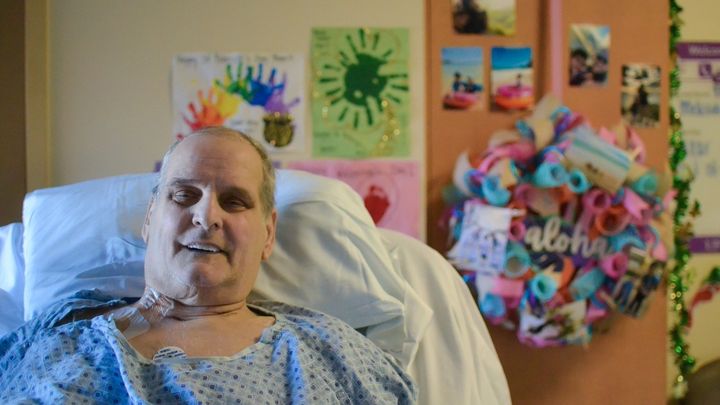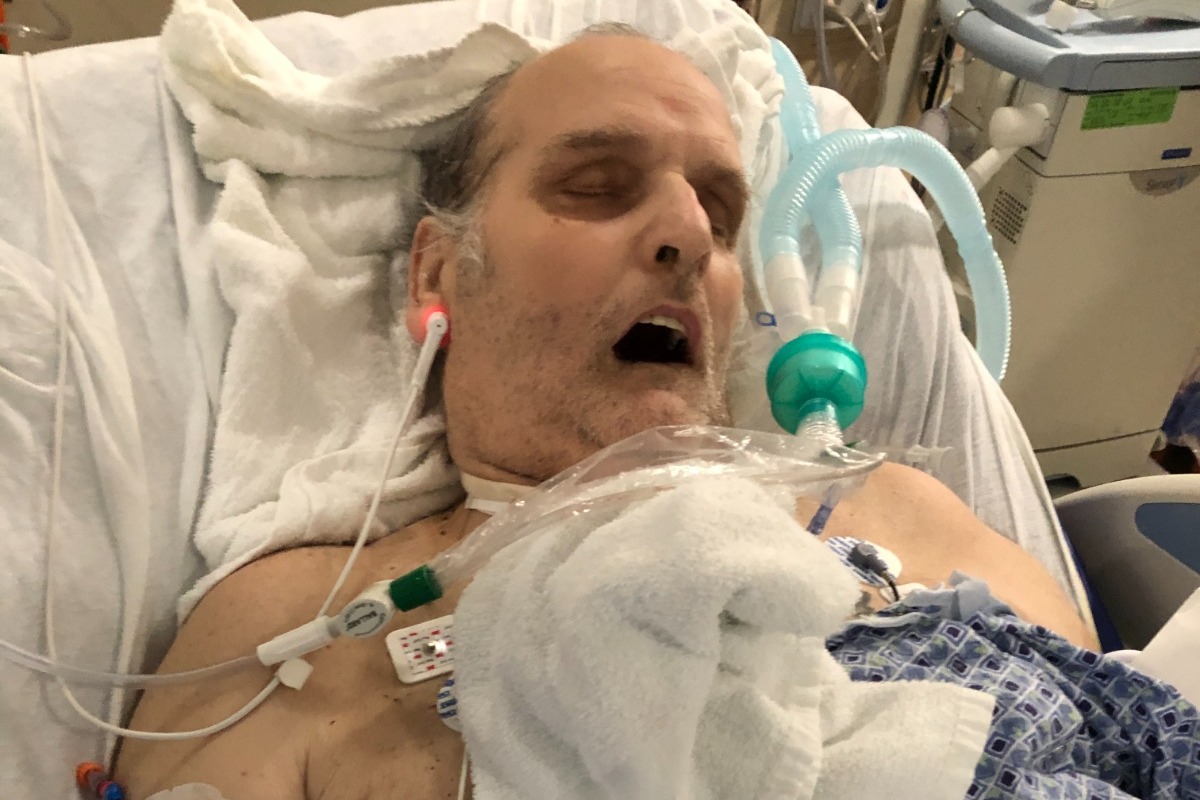
US Navy Vet Dave Miller’s 10 month COVID-19 Battle
Donation protected
Aloha, with a lot of thought about the future and as difficult as it can be at times to ask for help or even know what type of help you need, I have created this GoFundMe on behalf of my father. His recovery is the most important thing to us right now and being financially prepared to support him for the next few months seems like a logical step in our marathon. He has overcome some insurmountable odds fighting COVID19, needing Ventilator support for almost 50 days, requiring Dialysis, surviving a Cardiac Arrest and hosts of other complications along the way. He has been described by medical staff to have an "indestructible spirit" and their "miracle patient." That being said, it has thus far taken months and many hours of advocating, supporting, and researching to keep him with us. He continues to amaze me and those around him with his will to recover and eventually join us in Hawaii, our current home. A proud US Navy Veteran and Pennsylvania State Employee Retiree, he has spent most of his life serving others. Now, I hope he can eventually spend the remaining time he's fought so hard for serving as "Papa" to his grandsons he loves so much.
His insurance company Aetna has been an extreme barrier in his treatment unfortunately, often denying the level of care he needs.
If you'd like to read just some snapshots of his unbelievable Journey starting in November please continue reading...
On November 27, 2020, one day after Thanksgiving, David Miller started having symptoms he thought may be associated with Covid-19. He lived with family friends in New Castle and it turned out was exposed through one of their professions as a Nurse. He was admitted into the hospital on the evening of December 6th to the Critical Care Unit. He transferred to a regular floor on December 7th and stayed until experiencing progressive Respiratory Distress which ultimately resulted in the need for ventilator support and intubation on the morning of December 12th. The next 2 months were filled with every emotion involved in the human experience. The night of December 16th he was holding “Critical Care Stable” and was needing minimal Ventilator support, there were talks of weaning from the ventilator soon. Then, on December 17th he took a turn for worse and I got a call at 11am he was maxed out on ventilator support with his oxygen saturation levels still continuing to drop critically low. Family was called in for what they call “End of Life.” However, after a procedure called proning, changing a cracked intubation tube, and a bronchoscopy was completed which removed a mucus plug he quickly started to rebound. His oxygen needs decreased on the ventilator and we were back to hopeful. This was until December 24th when the call came that he had developed Sepsis and was non responsive, with restraints being removed, and little movement. He spent the next 4 days fighting that infection through Christmas, rarely moving and pale. On December 28th, the Sepsis seemed to resolve. During this time period, his kidneys also took a pretty significant hit and he required at least 2 weeks of Dialysis treatment. There was talk of permanent kidney damage and dialysis for life if he survived. He also experienced unexplained bleeding which dropped his blood counts and he endured multiple blood transfusions at times along this journey. On January 4th, after 24 days of intubation he finally had a Tracheostomy and Peg feeding tube placed. This gave renewed hope to wean from the ventilator with medication changes and gave him the opportunity to also wean from sedation. As they weaned from the sedation, on January 7th, he had what they called a seizure but were not sure, however an EEG showed no abnormalities. Although he would respond to his name by opening his eyes shortly after receiving the tracheostomy, he didn’t show signs of “waking up” and following commands until January 8th. From then until January 17th, things were on an upswing again and he was making progress, even trying to talk over his tracheostomy at times. January 17th he began experiencing pain in his abdomen, seemed to become septic again, and his vitals began to take a plummet. This ultimately led to an emergency life saving exploratory surgery indicating his PEG tube had moved out of place and the liquid diet had spilled out of his stomach and into his abdomen. They were able to clean it all and stitch his PEG tube to secure it. As he recovered from this, he began the process of weaning from the ventilator to a tracheostomy oxygen mask. He recovered again over the next 12 days and was discharged to a regular room on January 28 in the evening. That was a rough transition as well as night. On the regular floor he was in a room alone, with the door closed and checked on once per hour during rounds despite a request to check more frequently due to his weakness, inability to press the nurse call button, and wrist restraints which were still ordered. The morning of January 29th at 5:05am his heart slowed and stopped. With 15 minutes of CPR, a pulse was able to be established and he transferred back to the Critical Care Unit for a third time in this ordeal. There were not many answers as to what had happened, and still despite asking it remains not fully explained. The event does appear to be Respiratory Distress which then led to Cardiac Arrest. He was put on Cardiac Arrest protocol and put in a controlled hypothermic state for 24 hours to preserve brain function and then slowly warmed. He was given a 40% chance by the Pittsburgh Cardiac Arrest team consulting to regain brain functions. Thankfully, once again we were joyous as he woke up miraculously from the Cardiac Arrest pretty aware. He remained in the Critical Care Unit once again needing to wean from ventilator support which was necessary after the arrest. On February 4th he weaned from the ventilator to a tracheostomy mask once again. He remained in the Critical Care Unit until he was ready for Inpatient Rehab and transferred there on February 13. Since then, he works hard everyday to regain basic skills, his strength and God willing the ability to leave the hospital in the best health possible.






His insurance company Aetna has been an extreme barrier in his treatment unfortunately, often denying the level of care he needs.
If you'd like to read just some snapshots of his unbelievable Journey starting in November please continue reading...
On November 27, 2020, one day after Thanksgiving, David Miller started having symptoms he thought may be associated with Covid-19. He lived with family friends in New Castle and it turned out was exposed through one of their professions as a Nurse. He was admitted into the hospital on the evening of December 6th to the Critical Care Unit. He transferred to a regular floor on December 7th and stayed until experiencing progressive Respiratory Distress which ultimately resulted in the need for ventilator support and intubation on the morning of December 12th. The next 2 months were filled with every emotion involved in the human experience. The night of December 16th he was holding “Critical Care Stable” and was needing minimal Ventilator support, there were talks of weaning from the ventilator soon. Then, on December 17th he took a turn for worse and I got a call at 11am he was maxed out on ventilator support with his oxygen saturation levels still continuing to drop critically low. Family was called in for what they call “End of Life.” However, after a procedure called proning, changing a cracked intubation tube, and a bronchoscopy was completed which removed a mucus plug he quickly started to rebound. His oxygen needs decreased on the ventilator and we were back to hopeful. This was until December 24th when the call came that he had developed Sepsis and was non responsive, with restraints being removed, and little movement. He spent the next 4 days fighting that infection through Christmas, rarely moving and pale. On December 28th, the Sepsis seemed to resolve. During this time period, his kidneys also took a pretty significant hit and he required at least 2 weeks of Dialysis treatment. There was talk of permanent kidney damage and dialysis for life if he survived. He also experienced unexplained bleeding which dropped his blood counts and he endured multiple blood transfusions at times along this journey. On January 4th, after 24 days of intubation he finally had a Tracheostomy and Peg feeding tube placed. This gave renewed hope to wean from the ventilator with medication changes and gave him the opportunity to also wean from sedation. As they weaned from the sedation, on January 7th, he had what they called a seizure but were not sure, however an EEG showed no abnormalities. Although he would respond to his name by opening his eyes shortly after receiving the tracheostomy, he didn’t show signs of “waking up” and following commands until January 8th. From then until January 17th, things were on an upswing again and he was making progress, even trying to talk over his tracheostomy at times. January 17th he began experiencing pain in his abdomen, seemed to become septic again, and his vitals began to take a plummet. This ultimately led to an emergency life saving exploratory surgery indicating his PEG tube had moved out of place and the liquid diet had spilled out of his stomach and into his abdomen. They were able to clean it all and stitch his PEG tube to secure it. As he recovered from this, he began the process of weaning from the ventilator to a tracheostomy oxygen mask. He recovered again over the next 12 days and was discharged to a regular room on January 28 in the evening. That was a rough transition as well as night. On the regular floor he was in a room alone, with the door closed and checked on once per hour during rounds despite a request to check more frequently due to his weakness, inability to press the nurse call button, and wrist restraints which were still ordered. The morning of January 29th at 5:05am his heart slowed and stopped. With 15 minutes of CPR, a pulse was able to be established and he transferred back to the Critical Care Unit for a third time in this ordeal. There were not many answers as to what had happened, and still despite asking it remains not fully explained. The event does appear to be Respiratory Distress which then led to Cardiac Arrest. He was put on Cardiac Arrest protocol and put in a controlled hypothermic state for 24 hours to preserve brain function and then slowly warmed. He was given a 40% chance by the Pittsburgh Cardiac Arrest team consulting to regain brain functions. Thankfully, once again we were joyous as he woke up miraculously from the Cardiac Arrest pretty aware. He remained in the Critical Care Unit once again needing to wean from ventilator support which was necessary after the arrest. On February 4th he weaned from the ventilator to a tracheostomy mask once again. He remained in the Critical Care Unit until he was ready for Inpatient Rehab and transferred there on February 13. Since then, he works hard everyday to regain basic skills, his strength and God willing the ability to leave the hospital in the best health possible.







Organizer
Michele Miller
Organizer
New Castle, PA